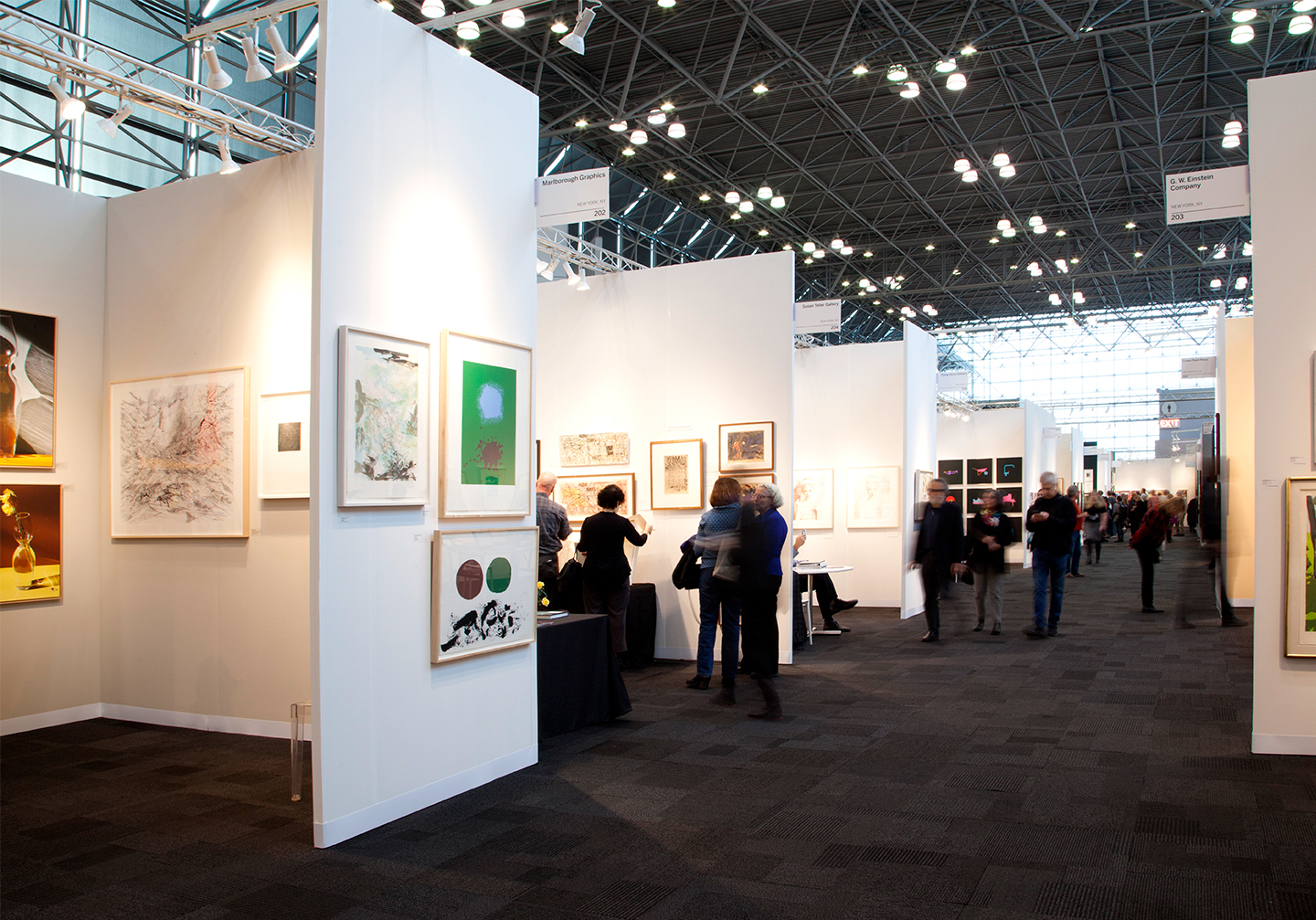
The International Fine Print Dealers Association Print Fair opens at Javits Center in New York City to the public on Friday, October 28th for its 29th edition. The fair features 76 exhibition booths, each with its own collection of prints ranging from valuable works by old masters to fresh pieces by contemporary voices. Below are 10 must-see standouts:
(1) Derrick Adams’ “Eye Candy” (2022).
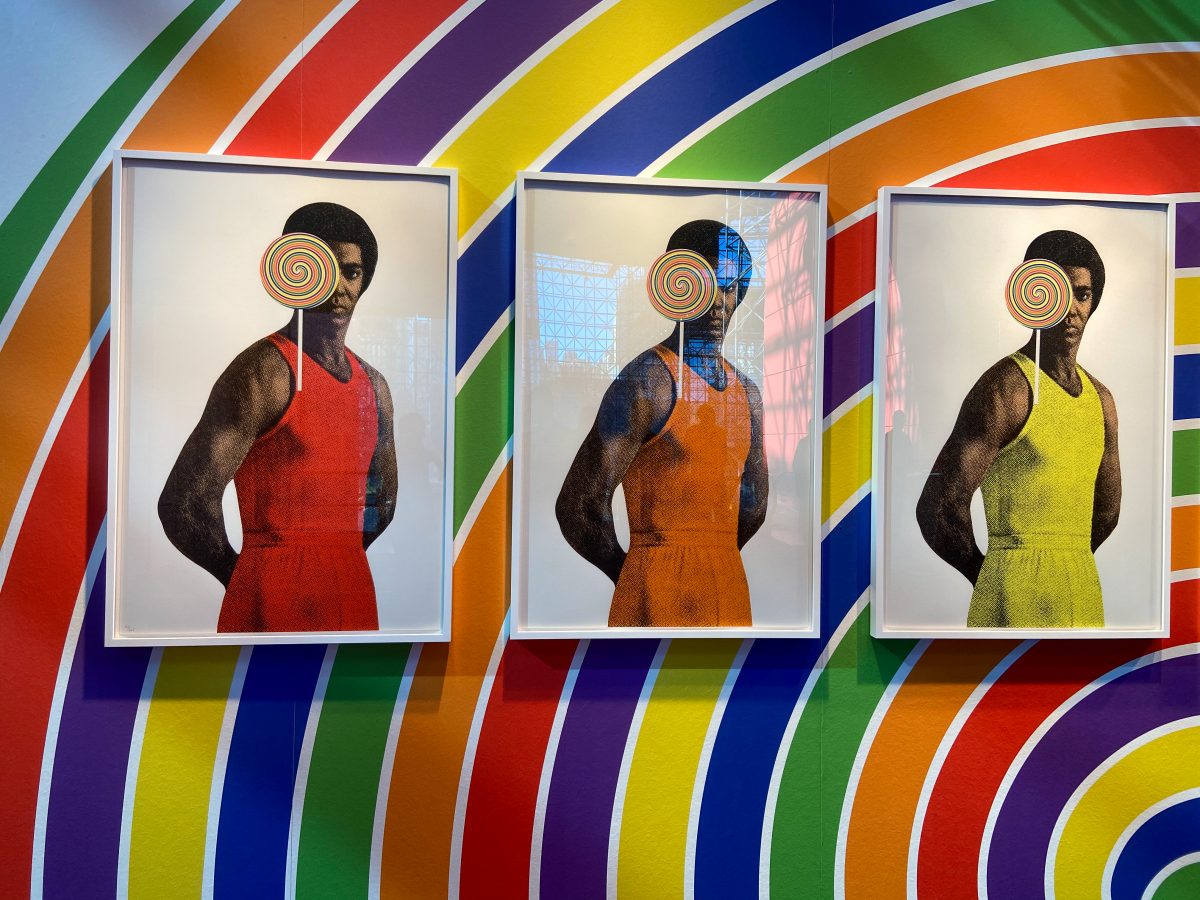
The IFPDA commissioned Derrick Adams to create this site-specific installation at the entrance to the fair. Derrick explains the piece: “Eye Candy is inspired by a vintage male underwear advertisement. The transformed image and installation exaggerate the provocative nature of the source imagery—bringing the black male figure to life in a repeated, colorful and hypnotic presentation.” His work explores the intersection of media and self–particularly how African American depictions fit into the larger scheme of arts, media, and culture. His series, “Style Variation,” is also on view at Tandem Press’ booth.
(2) Richard Bosman’s “Cellphone” series (2021).
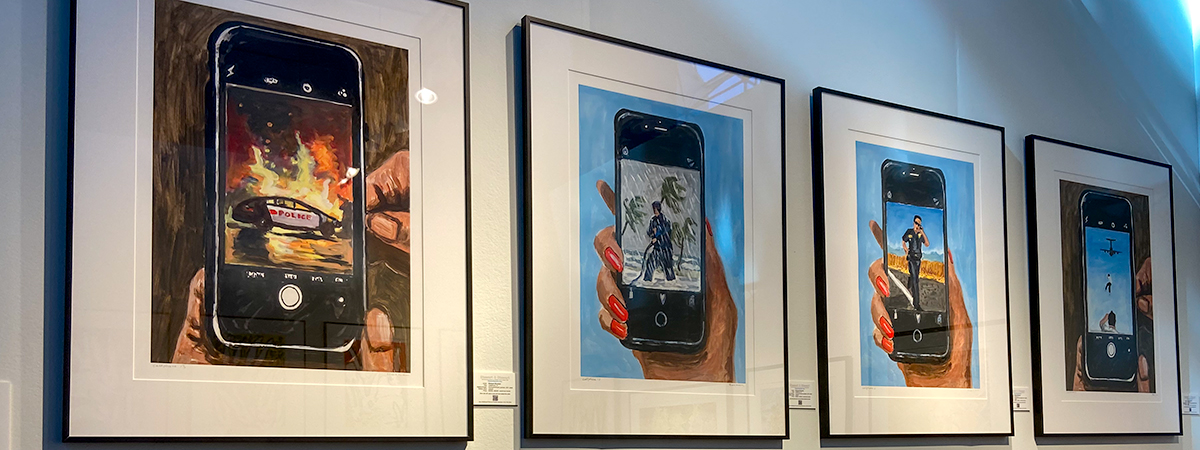
On view at Stewart & Stewart’s booth, Richard Bosman’s series of cell phones evoke a sense of emergency viewed through a dissociative degree of separation–a screen. Bosman, an Australian by nationality, was born in Madras, India in 1944, and then raised in Egypt and Australia, proceeding to study first at the Byam Shaw School of Painting and Drawing in London and then at New York Studio School in New York. With signs of his Neo-Expressionist, Noir, comic-like aesthetic, the artist captures the sense that something is very, very wrong yet takes the viewer out of the imminency of that danger by placing the imagery inside a cell phone.
(3) Farah Atassi’s “Model in Studio 4” (2019) and “Seated Woman With Sailor Top” (2020).
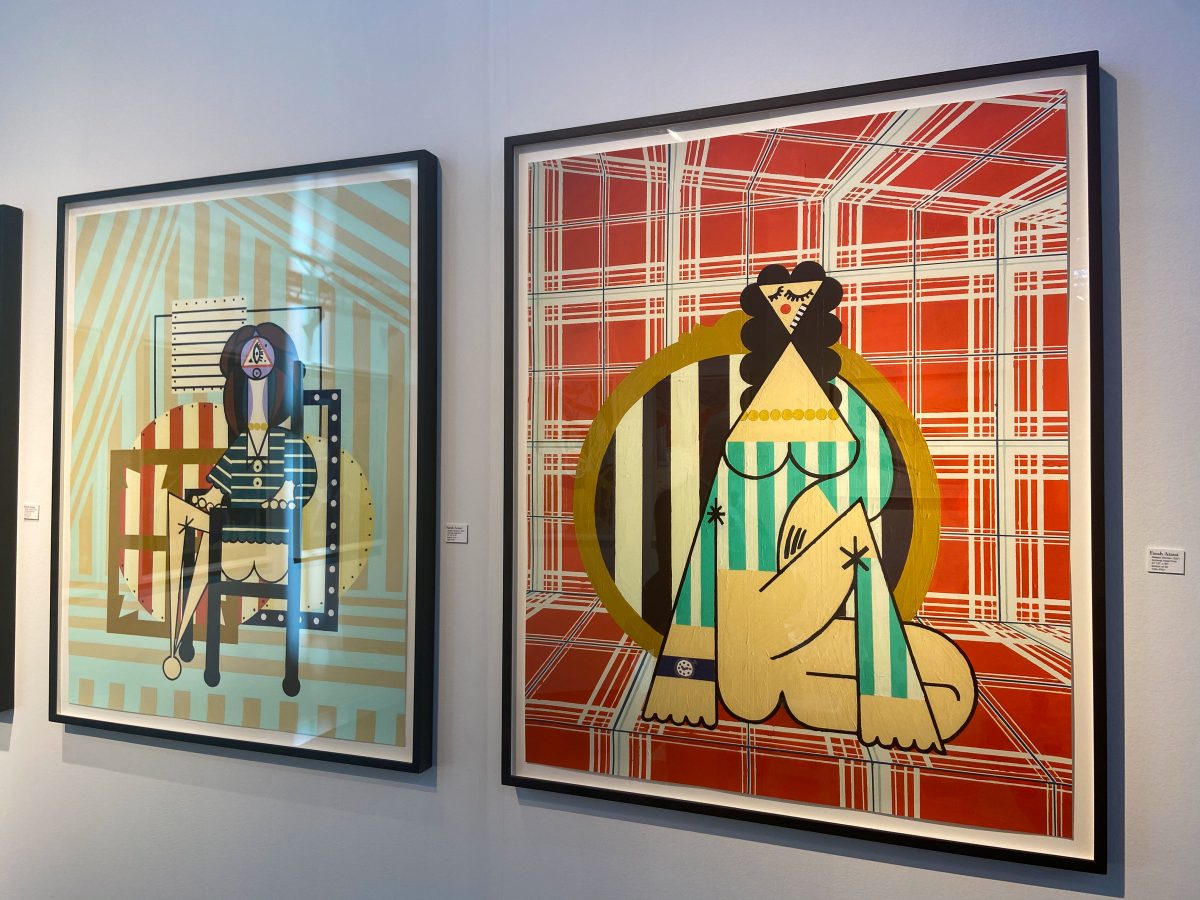
These pieces, on view at Cirrus Gallery & Cirrus Editions Ltd.’s booth, showcase the artist’s geometric figures, inspired by Picasso’s cubism and by Matisse. Atassi’s usual work revolves around oil painting, playing on tropes such as women sitting in the studio in a new, architectural way. The two women on display stand out on the walls in their abstract, textured spaces, posing for all to see.
(4) Pablo Picasso’s “Portrait de jeune Fille, d’après Cranach le Jeune. II.” (1957-1959).

The portrait, inspired by a postcard of Portrait of a Young Lady (1564) by Cranach le Jeune that Picasso received, is on display at Frederick Mulder’s booth. The 12 prints show Picasso’s process of re-creating the image, changing a color here and a form there. The progression shows the way the artist works, a rare glimpse into his boundary-pushing methodology and thought process, as well as a sign that perhaps the old masters are not so inescapable after all, even for the man that stood up to them.
(5) LaToya M. Hobbs’ “SISTERSHIP” (2022).

Through carving, painting, and collage, Hobbs’ own booth shows themes of womanhood, familial relationships, and spirituality. The monumental relief carving Genette’s Daughters shows six sisters together, standing before a pattern from the Adinkra symbol Akoma Ntoaso, which means “the joining of hearts.” The large relief, as well as the portraits, each shine beautifully with the personality, beauty, and sense of connection exemplifying what it means to be a Black Woman in a family and in contemporary society.
(6) Shirin Neshat’s “Offerings” (2019).

Neshat’s work, on display at LeRoy Neiman Center for Print Studies of Columbia University’s booth, explores what it means to be a woman in the contemporary sociopolitical space of Iran. This series of nine prints show a woman’s palms in various positions, assuming the universal gesture for prayer and overlaid with writings from a poem by Omar Khayyam (1048-1131) about the sacredness of wine. Neshat’s work typically involves photography and video, examining the ways in which the political permeate into one’s intensely personal identity. Her work has been on display at the Whitney Museum of American Art and the Stedelijk Museum, among others, and she holds the 2009 Silver Lion Award from the Venice Film Festival as well as the First International Prize from the 1999 Venice Biennale.
(7) Nana Shiomi’s “Girls are Diamonds” (2021) and “Home for Runaway Girls” (2021).
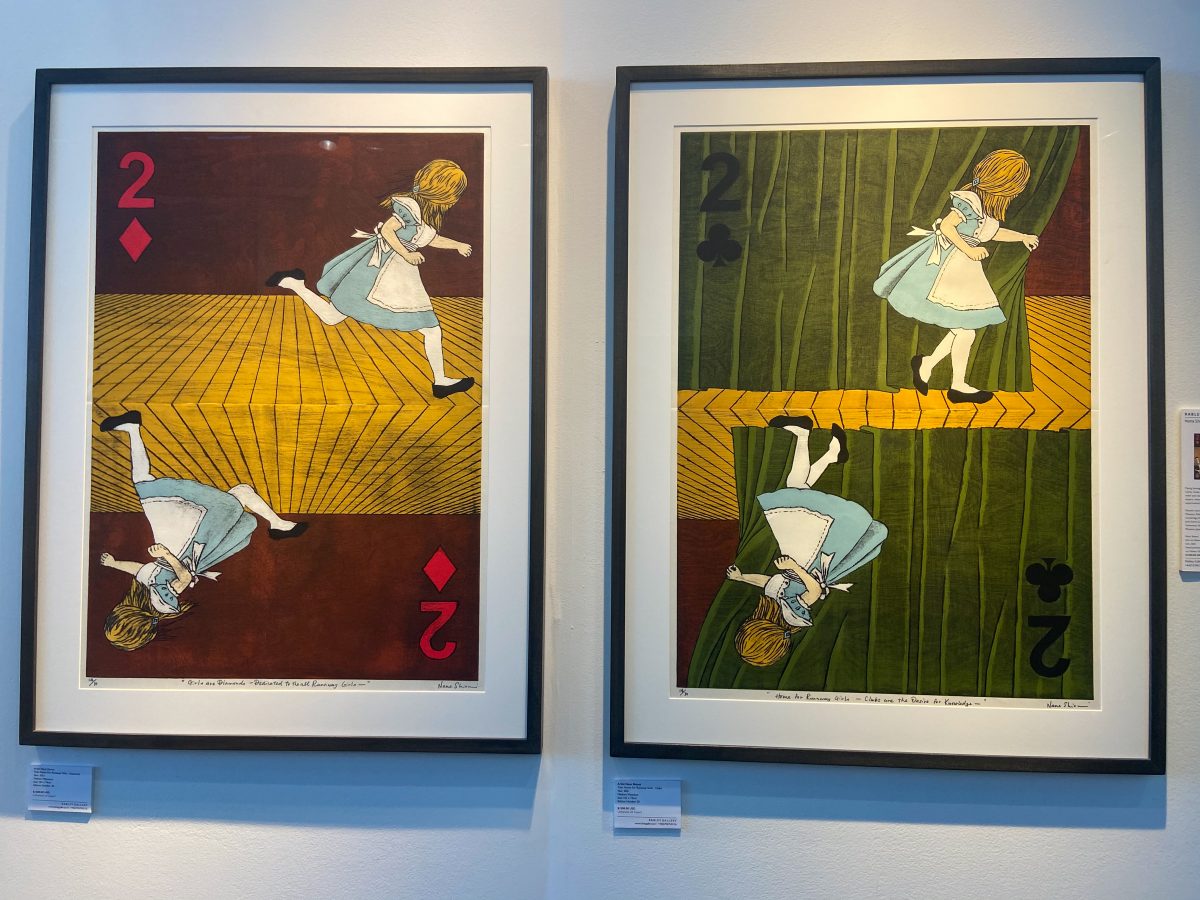
At the back of Rabley Gallery’s booth, one might miss this beautiful take on Alice in Wonderland playing cards by Nana Shiomi, but it is worth stopping to take a closer look. Shiomi began printmaking at the age of 20, and her technique is a very traditional Japanese style, but her woodcut prints read contemporary in style and impact. Shiomi’s playing cards exemplify perfect technique and evoke a sense of being lost in time and space, with Alice forever peeking out of the curtain or running away from home.
(8) Alex Katz’s work, including “Ada Four Times” (1927) and “Brisk Day Series 2–Aquatint” (1990).

Marlborough’s booth showcases the work of Alex Katz, who started printmaking on top of his painting career in 1965, often portraying dramatically cropped individual portraits in his oeuvre. He has been the subject of over 250 solo exhibitions and almost 500 group exhibitions, including showcases at the Whitney Museum of American Art and the Solomon R. Guggenheim Museum, where he is currently on view through February 20th, 2023. Ada, his wife and model, often appears in his work.
(9) Robert Longo’s “Eric and Gretchen” (1984).

American filmmaker, photographer, artist, and musician Robert Longo became well-known in the 1980s for his “Men in the Cities” print series, showing a man and a woman contorted emotionally in urban attire. The piece is impactful in both its scale and the gesture of its impeccably dressed subjects, who are writing with pained expressions. This pair is part of a larger collection of similarly themed, expressive, large-scale prints, with subjects lurching forward or sprawled or collapsing towards the ground.
(10) Yuji Hiratsuka’s “Looking For The Right” (2015), “Hime (Princess)” (2015), and “Wonderland” (2012).

At the Tolman Collection of Tokyo’s booth, this trio of works by Yuji Hiratsuka stands out due to its impeccably crafted portrayal of pained fairytale scenes. Born in Osaka, Japan, Hiratsuka holds a B.S. in Art Education from the Toyko Gakugei University and degrees in printmaking from the New Mexico State University and Indiana University. His artist statement explains, “My prints explore the complex relationship of paper, ink and etched plates to describe my thought, as well as the relationship which occurs between figures and space to express other human experiences…The enigmatic figures I draw are reflections of human conditions such as; wry, satire, whimsy, irony, paradox, or the mismatches that happen often in people’s daily lives.” Here, the irony of the Cinderella figure surrounded by pairs of identical shoes exemplifies her playful yet dark plight.


